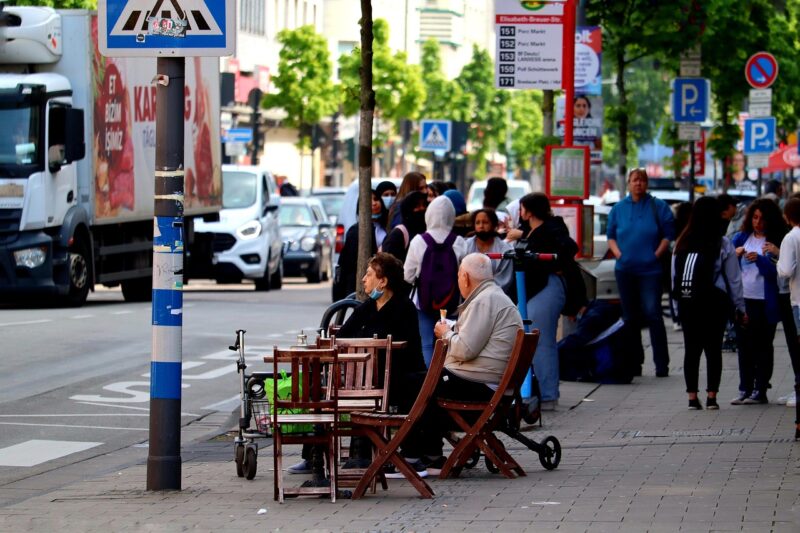How National Languages Unite and Divide Multicultural Societies
November 16, 2024

Language is more than just a means of communication; it serves as a strong binding force within cultures, shaping identities, relationships, and communities. In multicultural societies, national languages can act as both a unifying and divisive element. This dual role arises from the complexities tied to language use, identity, social power, and communal cohesion. Understanding this dual impact is crucial in navigating contemporary global challenges regarding national identity and multiculturalism.
1. The Role of Language in Identity Formation
Language plays an essential role in shaping individual and group identity. For many, their native tongue is intricately linked to their sense of self, cultural heritage, and family traditions. In multicultural societies, individuals often navigate multiple languages, which can enrich their identity but also create tension.
– **Cultural Heritage**: Language serves as a vessel for the transmission of history, values, and traditional practices. The narratives embedded in languages help people understand their cultural identity and heritage.
– **Social Identity**: Individuals often align themselves with language-speaking communities, which molds their social network and influences personal relationships.
While a national language may promote a sense of belonging among speakers, it can marginalize non-speakers, fostering feelings of exclusion among those whose linguistic backgrounds differ.
2. Language as a Unifying Force
In nations characterized by linguistic diversity, establishing a national language can have unifying effects:
– **Enhanced Communication**: A common language facilitates communication across diverse groups, enabling mutual understanding and interaction.
– **Civic Participation**: A national language can increase civic engagement by ensuring that more citizens can participate in political, social, and economic discussions.
– **National Identity**: It can create a shared sense of identity and belonging, fostering national pride and cultural cohesion.
**Case Study: Canada**
In Canada, English and French are both recognized as official languages. This bilingualism has led to a more inclusive society, allowing for diverse engagement while enabling a national identity that honors both linguistic heritages.
3. Language as a Divisive Factor
While a national language may unify, it can equally act as a divisive force:
– **Exclusion and Marginalization**: Groups whose mother tongue is not the national language may feel excluded from public life, limiting their opportunities and silencing their voices.
– **Cultural Erosion**: When a national language is emphasized over others, minority languages and cultures may face erosion, leading to a loss of cultural diversity and identity.
– **Social Tensions**: Language-based discrimination can exacerbate existing social tensions. In some cases, speaking the national language can become a symbol of power that marginalizes non-speakers and diminishes their social standing.
**Case Study: India**
In India, while Hindi serves as a national language, numerous regional languages co-exist. Tensions can arise when Hindi is perceived as dominant, leading to feelings of resentment among non-Hindi speakers.
4. Language Policy and its Implications
The way nations approach language policy can greatly influence whether they experience unity or division:
– **Inclusive Language Policies**: Countries that recognize multiple languages within their language policies tend to foster more inclusive societies. By accommodating diverse linguistic backgrounds, these nations bridge divides and promote integration.
– **Language Education**: Bilingual education programs can empower marginalized linguistic groups, providing them with tools to participate fully in society.
**Case Study: Switzerland**
Switzerland officially recognizes four national languages—German, French, Italian, and Romansh. This multilingual approach has helped maintain social harmony and national unity, allowing each linguistic group to flourish.
5. The Digital Space and Language Dynamics
The advent of the internet and digital communication has reshaped linguistic interactions:
– **Language Preservation and Revival**: Online platforms offer avenues for marginalized languages to thrive, encouraging younger generations to engage with their heritage.
– **Global Language Use**: While English often dominates global discourse, the power of the internet also facilitates the rise of regional languages in digital spaces.
**Case Study: Indigenous Languages**
Many indigenous groups use social media to revive their languages, fostering intergenerational language transmission and promoting cultural pride in an increasingly interconnected world.
6. Moving Toward a Balanced Approach
For multicultural societies to thrive, a balanced approach is essential. Here are some strategies:
– **Promoting Multilingualism**: Encouraging multilingualism fosters teamwork across diverse linguistic groups and enriches cultural exchange.
– **Cultural Awareness Programs**: Educating citizens about the importance of linguistic diversity promotes understanding and respect for all languages.
– **Collaboration with Communities**: Governments should engage with linguistic communities when crafting language policies to ensure their relevance and inclusivity.
Ultimately, the aim is to create environments where all citizens feel valued, regardless of their linguistic background, paving the way for greater social cohesion.
Conclusion
The tension between unity and division in multicultural societies regarding national languages is a testament to the complexity of human interactions. While a national language can serve as an agent for cohesion, it can simultaneously alienate those who do not share that linguistic background. The challenge lies in fostering an approach that recognizes the strength of both unity and diversity. Through inclusive policies, cultural awareness, and respect for linguistic variety, societies can work towards creating environments where all identities flourish, enriching societies that celebrate multiculturalism.
The path to effective communication and harmonious coexistence in multicultural settings is undoubtedly multifaceted, but by acknowledging the nuances of language, we take significant steps toward social progress, understanding, and a brighter collective future.







